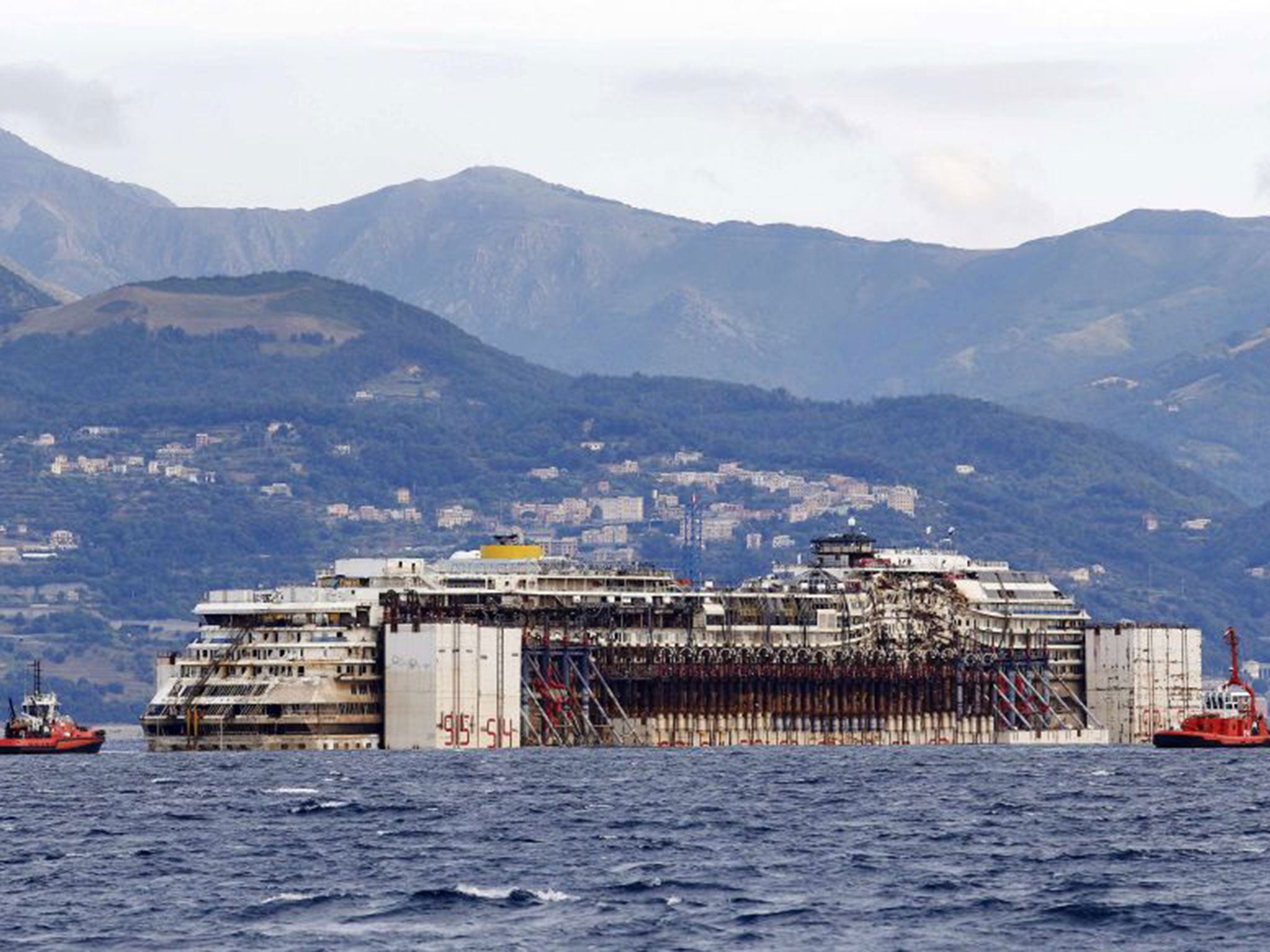Costa Concordia reaches Genoa's main port for scrapping after 200-mile journey from wreckage site
Its arrival in Genoa will mark the end of a two year salvage operation that is said to have cost over £1 bn

Your support helps us to tell the story
From reproductive rights to climate change to Big Tech, The Independent is on the ground when the story is developing. Whether it's investigating the financials of Elon Musk's pro-Trump PAC or producing our latest documentary, 'The A Word', which shines a light on the American women fighting for reproductive rights, we know how important it is to parse out the facts from the messaging.
At such a critical moment in US history, we need reporters on the ground. Your donation allows us to keep sending journalists to speak to both sides of the story.
The Independent is trusted by Americans across the entire political spectrum. And unlike many other quality news outlets, we choose not to lock Americans out of our reporting and analysis with paywalls. We believe quality journalism should be available to everyone, paid for by those who can afford it.
Your support makes all the difference.The Costa Concordia, the Italian cruise ship that sunk and killed 32 people in 2012, has entered the port of Genoa for scrapping after one of the biggest salvage operations in maritime history.
Two and a half years since the tragic sinking of the ship, the Costa Concordia has finally ended its four-day and 200 mile voyage to Genoa’s Voltri industrial port to mark the end of a two year salvage operation that has reportedly cost the Costa Concordia's owners, Costa Crociere, an estimated £1.2 billion.
After reaching Genoa, the ship will then be broken down by a consortium led by Italian engineering group Saipem and Genoa-based San Giorgio del Porto, which sources say could take a further two years and cost upwards of £79 million.
The Italian Prime Minister Matteo Renzi is expected to arrive in Genoa later on Sunday to mark the success of the operation.
Speaking on behalf of the government ahead of the Costa Concordia’s arrival in Genoa, environment minister Gian Luca Galletti told reporters: “This is not a celebration. We have to think of the victims, but it has to be said that keeping the Concordia in Italy is a great occasion for our country."
Adding: "We have excellent technology and we are capable of undertaking great things."
The scrapping of the Costa Concordia sees the final stage of a complex project that began just months after the boat was wrecked in January 2012.
Since April last year, these efforts have intensified, with cables being put underneath the submerged ship to pull it upright.
According to reports, there were up to 200 people working on the ship daily and the Italian authorities have received praise for carrying out the work with very few glitches and minimal damage to the environment.
Galletti said: "There hasn't been any problem at all. They should have a bit more confidence in Italians."
A massive operation nine days ago saw the ship re-floated nine days ago, which made it possible for the ship to be towed back to Genoa.
The return of the ship to the port in marks a bleak comparison to nine years ago when the ship embarked on its maiden voyage.
In September 2005 the ship, which was built in Genoa’s Fincantieri’s Sestri Ponente shipyard, was launched to great fanfare and celebration in the city.
After being in operation for seven years, in 2012 the ship which had a capacity of 4,000 passengers came into trouble off the island of Giglio on the Tuscan coast.
The ship’s captain, Francesco Schettino, is currently on trial for causing the ship wreck and , according to reports, if found guilty could face up to 20 years in jail.
Costa Concordia Salvage Operation in Numbers
Length: 290.20 m
Weight: 114,147 tonnes
Cost of ship: €450 million
Total cost of salvage operation: €1.5 billion
Estimated cost of scrapping of ship: €100 million
Amount of fuel removed from wreck: 2,380 tonnes
Number of salvage workers involved: 500
Join our commenting forum
Join thought-provoking conversations, follow other Independent readers and see their replies
Comments